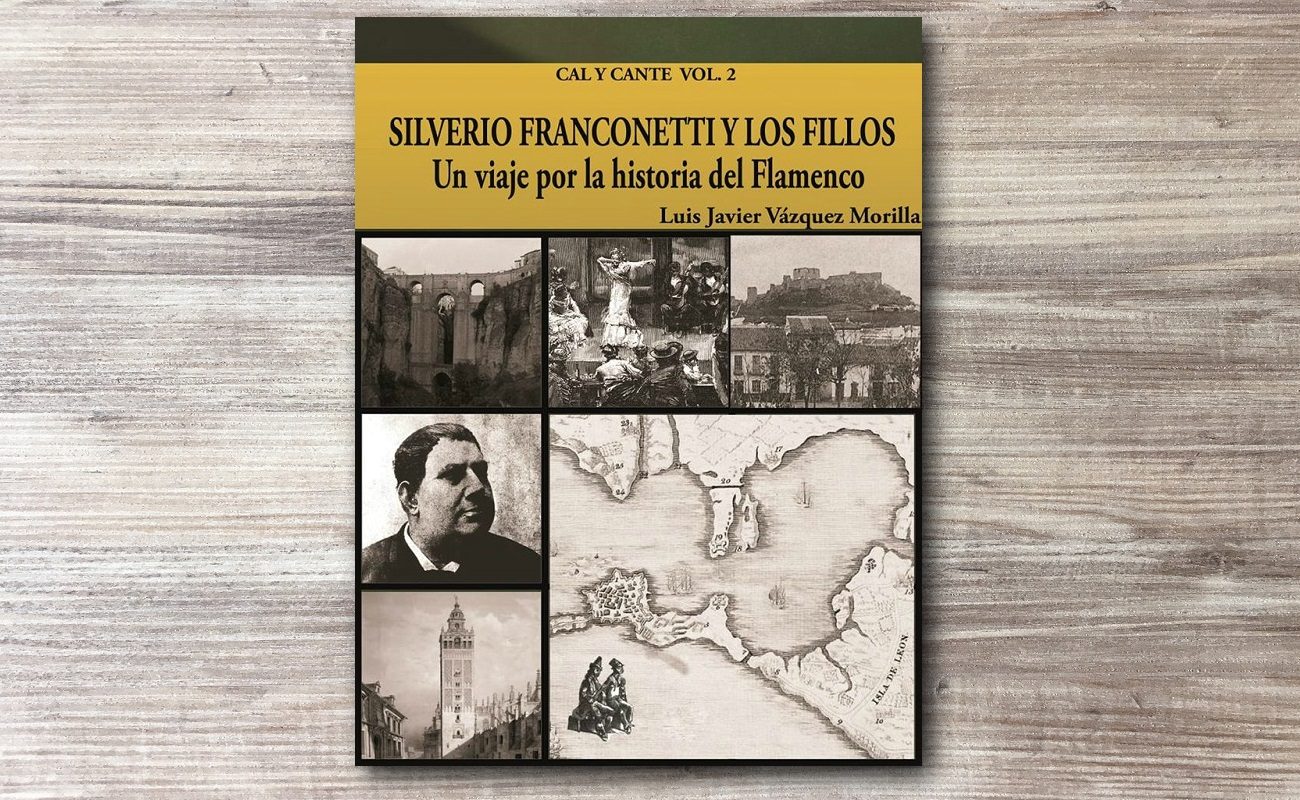Masterful book by Luis Vázquez Morilla: “Silverio Franconetti y los Fillos”
I regularly get hold of most books about flamenco written in Spain, and that’s a lot of books each year. It’s impossible to read all of them, although I always browse them carefully. Whether I read them or not depends on their content, their author and, above all, the way they’re written. I have read in full the book I’m

I regularly get hold of most books about flamenco written in Spain, and that’s a lot of books each year. It’s impossible to read all of them, although I always browse them carefully. Whether I read them or not depends on their content, their author and, above all, the way they’re written. I have read in full the book I’m writing about today. Actually, I read it a while ago, even before it was published, because its author, Luis Javier Vázquez Morilla, is a good friend of mine and he was kind enough to send me a printout of his whole book.
His biography of Tenazas de Morón hinted about the path that this researcher had chosen: the path of professionalism and accuracy. When Luis makes a statement, it’s because he has researched and verified the facts repeatedly. There shouldn’t be any path other than professionalism and accuracy, but, sadly, good researchers are rare, although in the last few years there have been about eight or ten who’ve undertaken an important work in this field which has been so neglected by the public institutions.
Luis Vázquez was born in Morón de la Frontera and that’s where he lives, one of the most flamenco places in the whole world. He’s an aficionado of flamenco in general, having a particular interest in the artists from that town in Seville province, and that’s why he wrote his wonderful biography of El Tenazas, and now this great research book about Silverio Franconetti and the Fillos. None of them was born in Morón, but they were closely connected with this town, as was the case with Silverio, who settled there when he was a kid, becoming a man and a cantaor in it. The same goes for El Fillo Jr., who was also a resident of the town.
Luis has undertaken an incredible research work, with the great accuracy and professionalism that the subject deserved. Thanks to José Blas Vega and other researchers, a lot was known about Silverio, but now, thanks to Luis, we know virtually everything having to do with his life, a passionate life, full of adventures and tribulations, as there was a bit of everything. The author scrapped all the places which were crucial in his life: the Seville of his childhood, the many years spent in Morón, his return to Seville in 1853 and his trip to South America, contributing new data and analysing in depth each of those stages in his life.
If the author contributes valuable data about Silverio, we can say the same about El Fillo and his siblings, Curro Pabla and Juan Encueros, and the celebrated María La Andonda. Not much (and badly) had been written about these Gypsy artists, but Luis has uncovered who they were, where they were from, where they lived and for how long. It’s interesting, for example, finding out about the death of Curro Pabla in Cantillana in 1843, when Silverio was just 12 years old, thus Silverio would not have been able to kill him, as had been rumored for over a century. There are important documents about that cantaor from San Fernando and married in Triana, who met a violent death in Cantillana.
Yet, we won’t reveal here all the things in this book. The matter is that you should get this book and put it in a place of honor in your library, because it’s a masterpiece. The prologue, by the way, is by a veteran researcher, Luis Suárez Ávila, from Puerto de Santa María, who was able to convey in his carefully-worded text the importance of this researcher from Morón.




